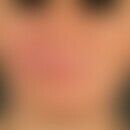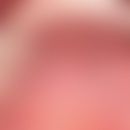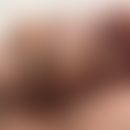HistoryThis section has been translated automatically.
Tomich,1974
DefinitionThis section has been translated automatically.
Oral focal mucinosis (OFM) is a rare, pseudotumorous, slow-growing (lesions existed for 2 to 36 months before excision) soft-tissue lesion of the oral mucosa of unknown etiology that may be considered the oral counterpart of cutaneous focal mucinosis or cutaneous myxoid cyst (Paiva Neto G et al. 2021).
You might also be interested in
EtiopathogenesisThis section has been translated automatically.
The pathogenesis of OFM is based on the overproduction of mucins by fibroblasts and the resulting accumulation of proteoglycans (also known as mucins), which are bound to glycosaminoglycans via their protein portion with a long filamentous central core (core protein). The proteoglycan molecules consist mainly of hyaluronic acid, dermatan sulfate, chondroitin-4-sulfate, and chondroitin-6-sulfate. The etiology of the disease is as yet unknown (Lee JG et al 2012). Local inflammation possibly triggered by trauma has been suggested as a potential etiologic factor (Gonzaga AK et al. (2018) Clinicopathological study of oral focal mucinosis: a retrospective case series. Med Oral Patol Oral Cir Bucal 23:e401-e405..
ManifestationThis section has been translated automatically.
Average age: 48.2 ± 20.7
LocalizationThis section has been translated automatically.
Gingiva, alveolar ridge, mucosa of the hard palate.
ClinicThis section has been translated automatically.
The OFM presents as a 0.25 to 1.2 cm, painless, flat tuberculated but also pedunculated elevation with the same color as the surrounding mucosa(Paiva Neto G et al. 2021). The surface is typically smooth and not ulcerated. Tooth shifting has been observed.
HistologyThis section has been translated automatically.
Histologically, OFM is characterized by a well-circumscribed area of myxomatous, pale, loose Alcian blue staining connective tissue (negative for S-100 protein, CD34, and alpha-SMA ) containing mucinous material and surrounded by denser collagenous connective tissue (Joshi CP et al. 2015). In the center of the lesion, there are thin, scattered, and randomly arranged collagen fiber bundles and fibroblasts of various shapes (spindle-shaped, star-shaped, and round); furthermore, few small-caliber blood vessels. Occasionally, multinucleated giant cells can also be detected.
Differential diagnosisThis section has been translated automatically.
Oral traumatic fibromas
Giant cell granulomas
Peripheral odontogenic fibroma
Pleomorphic adenoma/papilloma
LiteratureThis section has been translated automatically.
- Aldred MJ et al (2003) Oral focal mucinosis: report of 15 cases and review of the literature. Pathology 35:393-396.
- Ena S et al (2013) Oral focal mucinosis: a rare case report of two cases. Ethiop J Health Sci 23:178-82.
- Gonzaga AK et al (2018) Clinicopathological study of oral focal mucinosis: a retrospective case series. Med Oral Patol Oral Cir Bucal 23:e401-e405.
- Joshi CP et al (2015) A case of oral focal mucinosis of gingiva: lesion in disguise. J Indian Soc Periondontol 19:586-588.
- Lee JG et al (2012) Oral focal mucinosis in an adolescent: a case report. Aust Dent J 57:90-92.
- Paiva Neto G et al (2021) Oral focal mucinosis: A multi-institutional study and literature review. J Cutan Pathol 48:24-33.
- Silva KR et al (2014) Large oral focal mucinosis: a case report. J Bras Patol Med Lab 50:54-66.
- Tomich CE (1974). Oral focal mucinosos: A clinicopathologic and histochemical study of eight cases. Oral Surg Oral Med Oral Pathol 38:714-24.
Incoming links (1)
Solitary cutaneous focal mucinosis;Disclaimer
Please ask your physician for a reliable diagnosis. This website is only meant as a reference.




